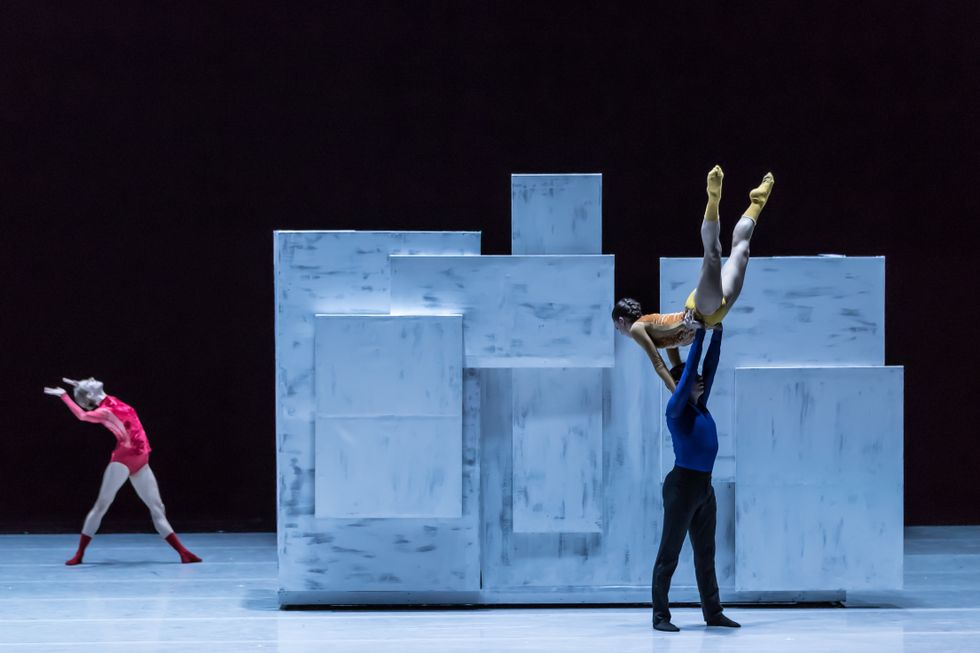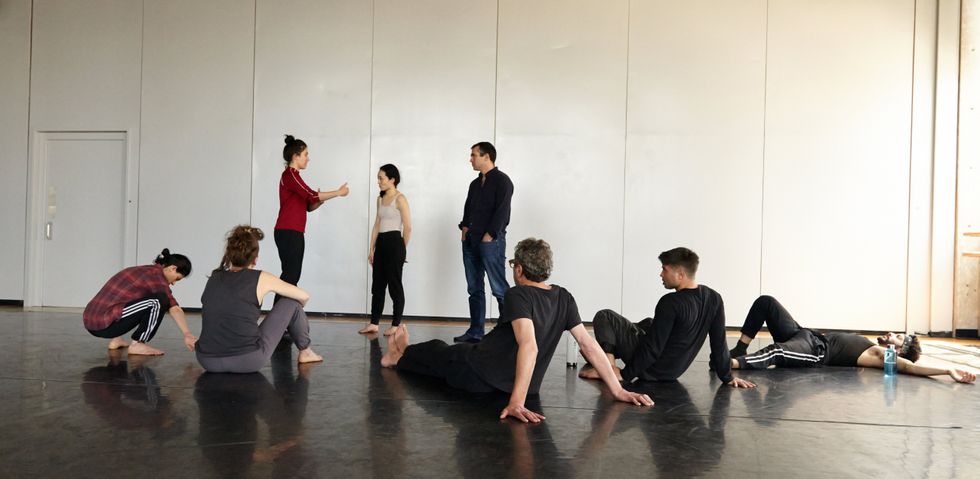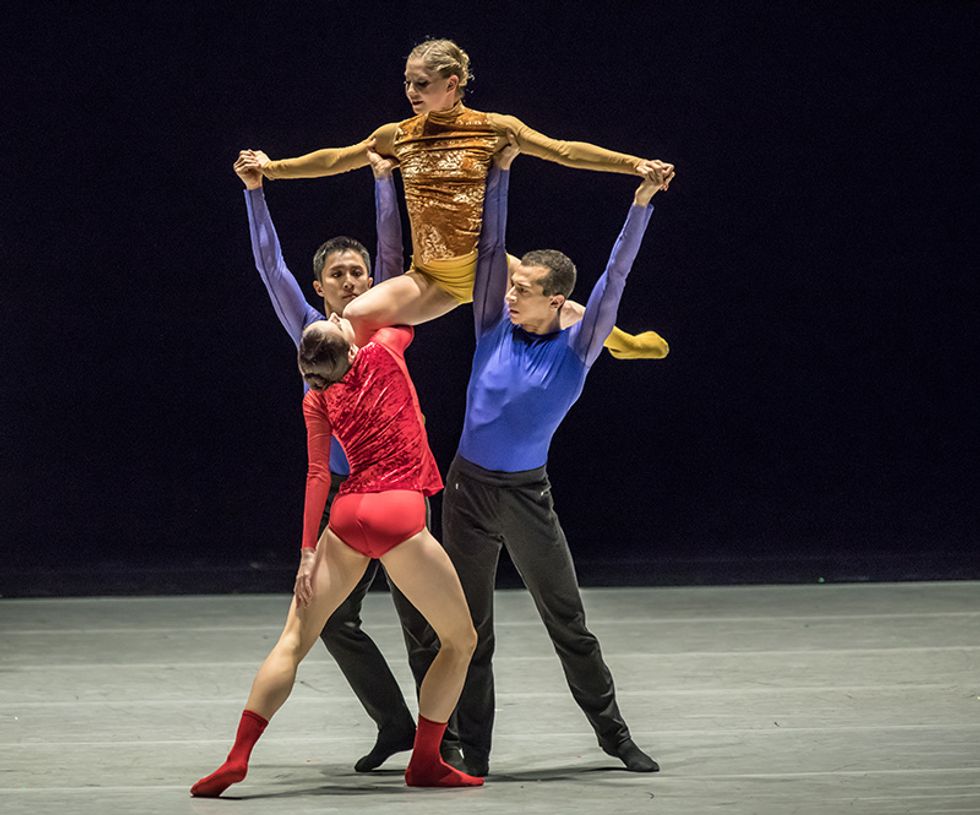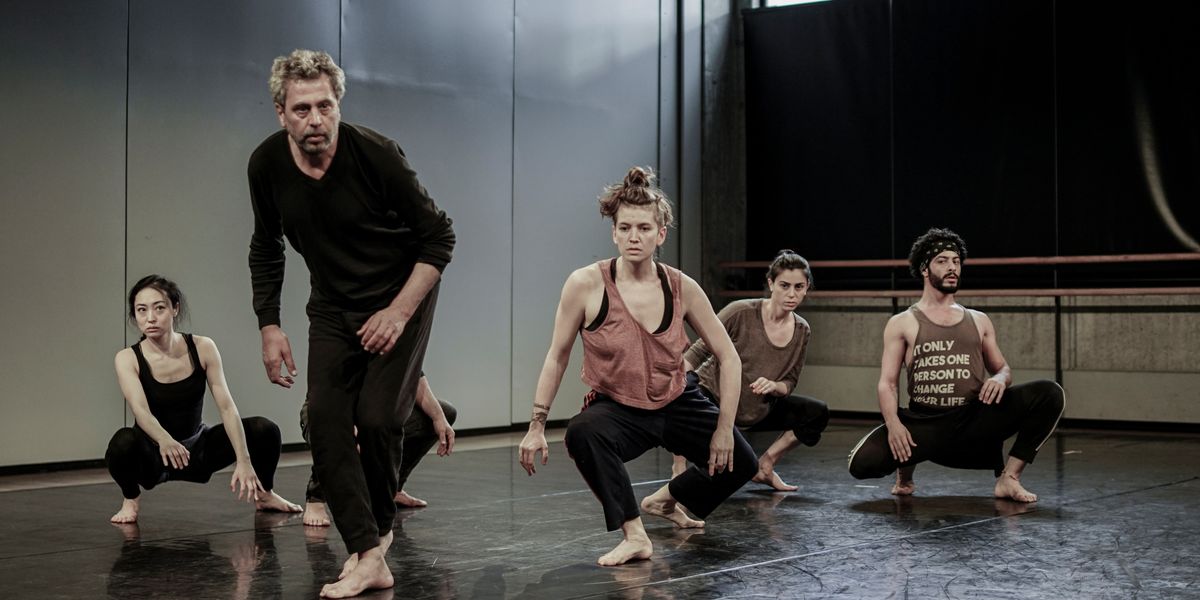Is It Actually Possible to Choreograph Remotely?
Samar Haddad King lives in Palestine but regularly choreographs on dancers in New York City for her company Yaa Samar! Dance Theatre. While technology has helped her bridge an ocean, she has also found it useful when checkpoints and road closures make travel between Israel and Palestine difficult—if not impossible—for her local company members. Choreographing remotely has allowed her to keep creating despite physical barriers.
Though few choreographers are working with such difficult geopolitics, many are finding that constrained rehearsal schedules and budgets require some amount of remote work. Video conferencing and smartphone apps make it possible to at least share the same screen space. But there are pros and cons to creating this way. Choreographers and dancers can be freed up for more opportunities. Yet almost all would still prefer to be in the same room, collaborating in real time.
Here’s how some choreographers are making it happen:
Think Beyond Skype
 Sending videos back and forth can help keep a record of how the piece is developing. Photo by rawpixel via Unsplash
Sending videos back and forth can help keep a record of how the piece is developing. Photo by rawpixel via Unsplash
While Skype and FaceTime are obvious choices when you need to run a rehearsal via live video conference, recording videos can help make sure details are not being lost. Freelance choreographer Andrea Schermoly began experimenting with remote choreography for competition students when she was dancing with Nederlands Dans Theater. Teachers would send her videos of the students so she could get a sense of their dancing, and she would send back videos of short solos she created. Schermoly would then conduct rehearsal sessions via Skype. She also found herself creating 10-minute tutorials explaining transitions, momentum and intentions. “The process taught me how detailed you have to be to communicate what you want,” says Schermoly.
Choose Your Words Carefully
 Schermoly suggests using descriptive phrases to convey movement remotely. Here, Schermoly’s Klein Perspectives. Photo by Ali Fleming, Courtesy Kansas City Ballet
Schermoly suggests using descriptive phrases to convey movement remotely. Here, Schermoly’s Klein Perspectives. Photo by Ali Fleming, Courtesy Kansas City Ballet
Choreographers need to be particularly intentional about the words they use when working with dancers remotely. “Teaching unison movement can become like a game of telephone,” says Zoe Rabinowitz, associate artistic director and performer with YSDT. “Without a centralized process through which collaborators can learn, ask questions, disagree and come to a common understanding of the phrase, the result is often as many different variations as there are rehearsal spaces.”
Today, when there’s a break between when Schermoly sets her work in person and the performances, she watches rehearsal videos and sends notes back. She favors action words and descriptive phrases that help bring everyone back to the intention behind the steps. “I try to make my notes as expressive as possible using phrases like ‘vulture wings’ or ‘carve and scoop’ or ‘throwing a ball,’ ” says Schermoly. “I might say ‘knees collapsing’ instead of ‘plié.’ ”
Utilize Social Media
 Get creative about using the social media tools at your disposal. Photo by Rahul Chakraborty via Unsplash
Get creative about using the social media tools at your disposal. Photo by Rahul Chakraborty via Unsplash
If you don’t want to be constantly emailing videos back and forth, use password protection on Vimeo or set up a private YouTube page where dancers can log in. For Haddad King, private groups on Facebook have also been a place where notes and videos from rehearsals can be posted.
Know Your Work
 Haddad King has more recently been meeting her dancers for different residencies. Photo by Isabel Asha Penzlien, Courtesy YSDT
Haddad King has more recently been meeting her dancers for different residencies. Photo by Isabel Asha Penzlien, Courtesy YSDT
Choreographing from afar won’t work for every artist’s process—and may function more as a temporary solution than a long-term way of creating. “All of that reteaching and editing every time I got in the studio with a new group became confusing and frustrating,” says Haddad King. Several recent residencies have allowed her to forgo her remote process and meet her dancers in different places—from Colorado to New York City to Paris.
If there are pivotal points in your process when you must be together, plan for that. Becoming more aware of how you choreograph and what your work requires from dancers will allow you to maximize any time that you have to be apart.
Hone Your Practice
 Learning how to manage a remote process could be beneficial for any dancemaker. Here, Schermoly’s Klein Perspectives. Photo by Ali Fleming, Courtesy Kansas City Ballet
Learning how to manage a remote process could be beneficial for any dancemaker. Here, Schermoly’s Klein Perspectives. Photo by Ali Fleming, Courtesy Kansas City Ballet
Managing your work remotely has become part of creating in the world today. “Everyone is doing it in some way,” says Schermoly. “There is a certain amount of expectation that it will happen, so you have to learn how to not lose the nuance.”




